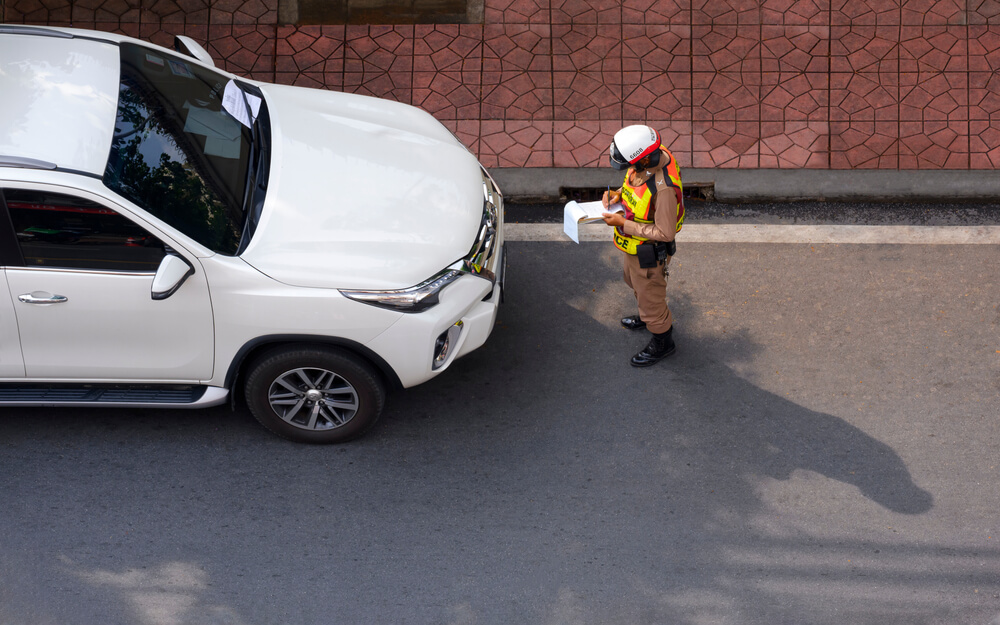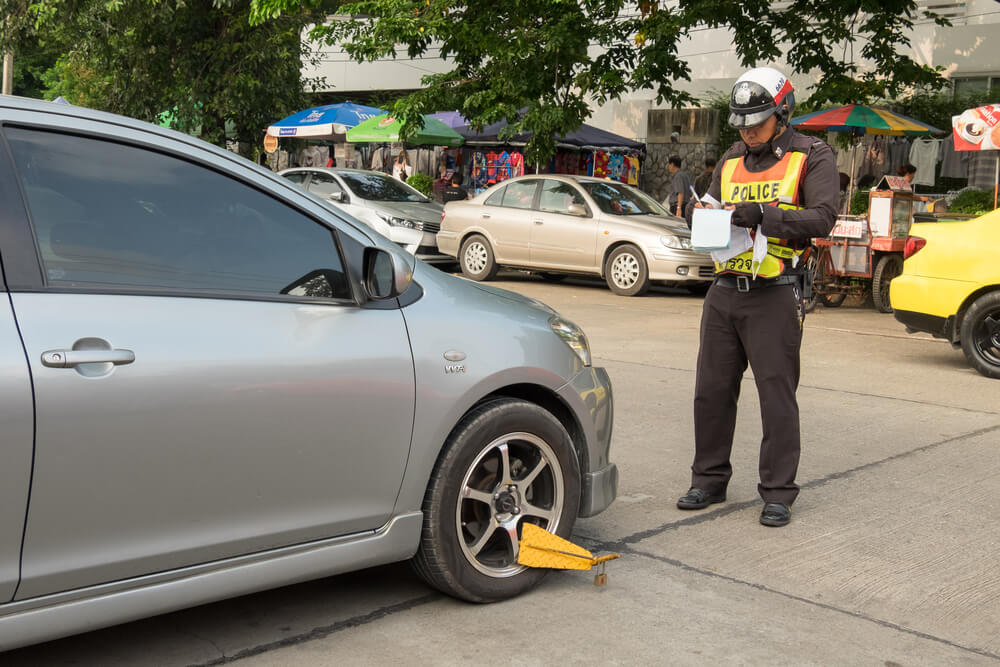Parking in the wrong spot can cause big problems for rental car drivers in Thailand. Many tourists get fined because they do not know Thailand Roadside Parking Laws. This guide explains simple rules, key road signs, and parking zones to help you avoid trouble.
Keep reading to stay safe and stress-free on your trip.
Understanding Thailand’s Roadside Parking Laws
Understanding Thailand’s roadside parking laws is crucial for all drivers. These laws help keep traffic flowing and ensure safety on the roads.
Importance of kerb colours and markings
Kerb colours and markings show legal parking zones under Thailand Roadside Parking Laws Every Rental Car Driver Should Know. These colours help drivers spot no-parking areas, short-term stops, or motorcycle-only spaces at a glance.
Clear kerb lines work with traffic signs to reduce confusion for tourist driving and car rental users who are new to local road rules.
Ignoring the kerb markings can lead to fines, towing penalties, or even vehicle clamping by police. Safe drivers always look for these visual guides before stopping their vehicles.
“Always check both the colour of the kerb and nearby traffic signs,” advises experienced rental car agents in Bangkok. Using these markings helps avoid breaking parking regulations while travelling throughout Thailand’s busy cities and towns.
General parking regulations to follow
Never park on footpaths or block driveways. Always follow parking signs and road markings. Only park in marked spaces for cars, not motorcycle zones. Avoid double parking and leaving your vehicle too close to bends, traffic lights, bus stops, or junctions; Thai law usually sets a minimum of five metres from these spots.
Do not leave your rental car where there are kerb restrictions like red and white paint.
Keep your driving permit visible if asked by police or officials while parked. Fines for illegal roadside parking range from 200 to 500 baht. Towing costs may add extra charges quickly and can affect tourist driving plans or travel insurance claims.
Use hazard lights only during emergencies as stated in local traffic regulations. Check all paperwork given with the car rental for rules about returning vehicles with unpaid fines.
Kerb Colour Guide in Thailand
The kerb colours in Thailand show where you can and can’t park. Each colour has a specific meaning that every driver should know.
Red and white: No parking or stopping
Red and white painted kerbs mean no parking or stopping at any time. These markings are strict under Thailand Roadside Parking Laws Every Rental Car Driver Should Know. Police often patrol these zones, especially in busy areas like Bangkok or tourist spots.
Stopping for even a few seconds can lead to fines, clamping, or immediate towing. Always check kerb colours before pulling over with your rental car to avoid breaking traffic laws and facing penalties under local parking regulations.
Yellow and white: Short-term parking or loading zones
After seeing red and white kerbs, which mean no parking or stopping at any time, watch for yellow and white markings. These mark short-term parking or loading zones under Thailand roadside parking laws every rental car driver should know.
Only stop here briefly to load or unload passengers and goods.
Parking in these zones is often limited by time, usually 5 to 15 minutes. Traffic signs near the kerb show allowed hours and limits. Do not leave your vehicle unattended for long periods as city officers may issue fines or tow your rental car if you break these traffic regulations.
Always keep within the short-term parking rules to avoid penalties during urban driving in Thailand.

White rectangles: Designated parking areas
White rectangles mark designated parking areas in Thailand. These spots are legal for parking your vehicle. Always park within the lines to avoid fines. Look for additional signs that may show time limits or specific rules.
Using these areas helps you comply with Thailand’s roadside parking laws. Ignoring these markings can lead to penalties and towing. It is wise to be aware of all regulations as you drive around, especially regarding illegal parking zones next.
White diagonal lines: Motorcycle parking only
Motorcycle parking is marked by white diagonal lines on the street. These areas are reserved only for motorcycles. Cars or other vehicles parked here may face fines or be towed. Always look out for these markings when you park your rental car.
Abiding by traffic laws ensures a smoother experience while driving in Thailand.
Consequences of Illegal Parking
Illegal parking can lead to fines, towing, or even having your vehicle clamped. Stay informed to avoid these issues and keep driving stress-free.
Fines and towing penalties
Fines for illegal parking in Thailand can be steep. Depending on the violation, fees may range from 200 to 2,000 Thai Baht. Authorities often issue fines on the spot.
Towing is a common penalty as well. Cars parked in restricted areas may be taken away by local officials. To retrieve the vehicle, drivers must pay towing charges and any associated fines.
Always check parking rules to avoid these costly penalties while renting a car in Thailand.
Potential vehicle clamping
Parking illegally can lead to vehicle clamping. This means that parking officials may physically secure your car, making it impossible to move until you pay a fine. Clamped vehicles often incur hefty penalties.
Rental car drivers should be aware of this risk.
If your rental car gets clamped, you will need to contact the local authorities or the rental agency for help. They will provide steps on how to deal with it. Always park in designated areas and follow Thailand’s roadside parking laws to avoid these problems.
Tips for Avoiding Parking Issues
Always check road signs for parking rules. If unsure, ask locals or security guards for help. Knowing the rules can save you from fines and towing fees. Read more to stay informed!
Always check road signs for restrictions
Road signs show important rules for parking. They help you know where you can and cannot park. Signs can display time limits or specific restrictions. Pay close attention to these details before leaving your car.
Ignoring road signs can lead to fines or even towing. Avoid penalties by making sure you follow the posted rules. If unsure, ask locals or security guards what is allowed in that area.
Ask locals or security guards if in doubt
Checking road signs is important to avoid parking mistakes. If you’re unsure about the rules, ask locals or security guards for help. They know the area well and can give you accurate information.
Do not hesitate to seek advice if something looks unclear. Understanding local customs can save you from fines or hassles with your rental car.
Thailand Roadside Parking Laws
Parking laws in Thailand are clear and important for rental car drivers. Knowing the kerb colours can save you from fines or worse. Always check local signs before you park. If unsure, ask locals for help.
Stay safe and enjoy your trip! We hope this blog about Thailand Roadside Parking Laws helped you.
When you need to rent a car in Thailand, SPS Car Hire Pattaya is the perfect option. Please click on the button below to see our rental cars. You can also click here to see our moped rentals.


